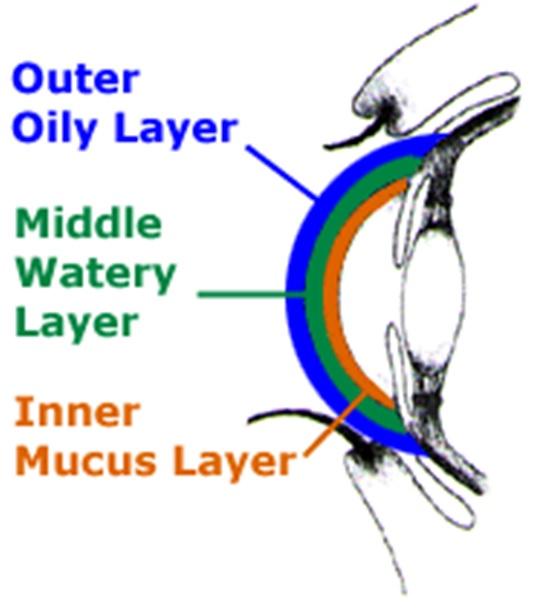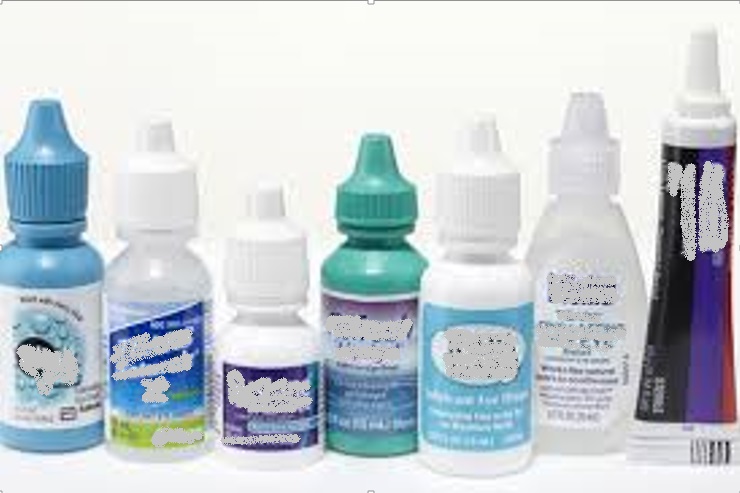Dry eye is a condition in which there are insufficient tears to lubricate and nourish the eye. Tears are necessary for maintaining the health of the front surface of the eye and for providing clear vision. People with dry eyes either do not produce enough tears or have a poor quality of tears. Dry eye is a common and often chronic problem, particularly in older adults. This abnormality may result in disruption of the ocular surface, causing a variety of symptoms and signs that interfere with quality of life.
With each blink of the eyelids, tears are spread across the front surface of the eye, known as the cornea.
Function of tears
- To lubricate the front surface of the eye,
- To reduce the risk of eye infection,
- To wash away foreign matter in the eye, and
- To keep the surface of the eyes smooth and clear.
Dry eyes can result from an improper balance of tear production and drainage. Tears are produced by several glands in and around the eyelids.
Tear production tends to diminish with:
- Age,
- Various medical conditions (eg. Rheumatoid arthritis)
- Side effect of certain medicines
- Environmental conditions such as wind and dry climates which cause increase in tear evaporation.
When the normal amount of tear production decreases or tears evaporate too quickly from the eyes, symptoms of dry eye can develop.
Tears are made up of three layers of fluid with different function:
- Oil layer
– Helps to prevent evaporation of the water layer - Water layer
– Form the main bulk of the tears - Mucus layer
– Functions in spreading the tears evenly over the surface of the eye
Causes of Dry Eyes
- Age
Dry eye is a part of the natural aging process. The majority of people over age 65 experience some symptoms of dry eyes. - Gender
Women are more likely to develop dry eyes due to hormonal changes caused by pregnancy, the use of oral contraceptives, and menopause. - Medications
Certain medicines, including antihistamines, decongestants, blood pressure medications and antidepressants, can reduce the amount of tears produced in the eyes. - Medical conditions
Persons with rheumatoid arthritis, diabetes and thyroid problems are more likely to have symptoms of dry eyes. - Structural problems with the eyelids
Inflammation of the eyelids (known as blepharitis), inflammation of the surfaces of the eye, or deformity of eyelids can cause dry eyes to develop. - Environmental conditions
Exposure to smoke, wind and dry climates can increase tear evaporation resulting in dry eye symptoms. Failure to blink regularly, such as when staring at a computer screen for long periods of time, can also contribute to drying of the eyes. - Other factors
Long term use of contact lenses can be a factor in the development of dry eyes. Refractive eye surgeries, such as LASIK, can also cause decrease in tear production leading to dry eyes.
Symptoms and Signs of dry eyes
When tears do not adequately lubricate the eye due to above causes, a person may experience:
- Pain
- Light sensitivity
- A gritty sensation
- A feeling of foreign body in the eye
- Itching
- Redness
- Blurring of vision
- Stringy mucus in or around eyes
- Eye redness
- Tearing (as a result of reaction to eye pain /discomfort)
Treatment of dry eyes
Though dry eyes cannot be cured, there are a number of steps that can be taken to reduce symptoms and signs. The treatment includes:
- Lubrication (artificial tear in the form of eye drops and ointments).
The use of artificial tear eye drop is the primary treatment for dry eye. If you have chronic dry eye, it is important to use the drops even when your eyes feel fine, to keep them lubricated. Ointments are used at night for longer action and if dry eye is severe.
- Temporary punctal occlusion.
Sometimes it is necessary to close the ducts that drain tears out of the eye. This may be done temporarily with a dissolving plug that is inserted into the tear drain of the lower eyelid to determine whether permanent plugs can be used with adequate supply of tears maintain. - Non-dissolving punctal plugs and punctal occlusion by cautery (application of heat to tear exit duct).
If temporary plugging of the tear drains works well, then longer-lasting plugs or cautery may be used. These measures increase the tear level by blocking the “drainpipe” through which tears normally exit the eye and enter the nose. - Lipiflow.
Lipiflow is a medical device that uses heat and pressure on the eyelids to unclog blocked glands. These glands produce oil as part of the tear film. The oil prevents the tears from evaporating. - Restasis.
The FDA approved the prescription eye drop Restasis for the treatment of chronic dry eye. It is currently the only prescription eye drop that helps your eyes increase their own tear production with continuous use. - Other medications and nutrition.
Other medications, including steroid eye drops, can be used for short periods of time as an adjunct to other long-term measures. However, steroid usage must be under eye doctor’s supervision. There is growing evidence that increasing the oral intake of fish oil and omega-3 via diet or supplement is very helpful to those suffering from dry eye.
Can self-care treatments and remedies help alleviate dry eyes?
To help alleviate the symptoms of dry eye syndrome, certain self-care tips at home may help.
- A humidifier puts more moisture into the air. With more moisture in the air, tears evaporate more slowly, keeping the eyes more comfortable.
- Air conditioning will decrease the humidity in the air. Excessive air movement dries out the eyes. Avoid having excessive air movement by decreasing the speed of ceiling fans and/or oscillating fans. Large amounts of dust or other particulate matter in the air may worsen the symptoms of dry eye. In those situations, an air filter may be helpful.
- Hot compresses and eyelid scrubs/massage with baby shampoo help by providing a thicker, more stable lipid layer. This is especially helpful if a person has meibomian gland dysfunction, rosacea, or blepharitis. The heat warms up the oil in the oil glands, making it flow more easily, the massaging action helps get the oil out of the glands. The cleansing action decreases the number of bacteria that break down the oil.
- If the eyes are dry mainly while reading or watching TV, taking frequent breaks to allow the eyes to rest and become moist and comfortable again is helpful. Closing the eyes for 10 seconds every five to 10 minutes will increase comfort, as will blink more frequently.
- Taking a fish oil (or other high quality source of omega-3 fatty acids) supplement every day can often be helpful in alleviating symptoms of dry eye.
Reference
- www.medicinenet.com/dry_eyes/article.htm
- www.aoa.org/patients-and-public/eye-and-vision…of-eye…/dry–eye
- www.allaboutvision.com/conditions/dryeye.htm
- https://www.nei.nih.gov/health/dryeye/dryeye.asp
- www.mayoclinic.org/diseases-conditions/dry–eyes/basics/…/con-2002412…
| Last reviewed | : | 23 August 2019 |
| Writer/Translator | : | Dr. Rosniza bt. Ab. Razak |
| Accreditor | : | Dr. Salmah bt. Othman |
| Reviewer | : | Dr. Rosniza bt. Ab. Razak |










